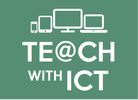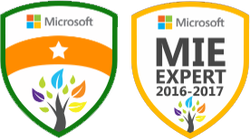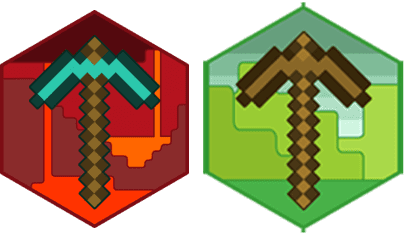|
In my seventh lesson, I decided to explore the different types of memory. Learning Objectives:
Lesson 1: RAM and ROM Suggested time: 50 mins Starter: I started with an activity adapted from a resource I found on CAS courtesy of Philip Upstone – “Main Memory - Kinaesthetic Activity”. You can find the original here: (http://community.computingatschool.org.uk/resources/938). In this activity, students move around the room simulating the transfer of data between various storage locations such as RAM, Cache memory, Secondary Storage and Virtual memory. Resources:
Place these posters around the classroom (see diagram) at the start of the lesson.
Cut out and hand these out to students at the start of the activity. Main task: I started by explaining the difference between volatile and non-volatile memory. I then displayed, on the whiteboard, images of different types of memory and asked the students to try to identify each of the images and decide if was volatile or non-volatile. I then showed them two videos from Cambridge GCSE Computing Online – “The difference between RAM and ROM – Part A”: http://www.youtube.com/watch?v=URYPErhTkMY & “The difference between RAM and ROM – Part B”: http://www.youtube.com/watch?v=IbAbhuTELWE I introduced the next activity using a Voki (http://www.voki.com). A Voki is a free service that allows you to create personalised speaking avatars and use them on your blog, website, and in email messages. I used the voki to instruct the students to, in their teams, complete the following task (See the voki I used below): 1. Create a Voki to describe one of the following: a. RAM b. ROM c. Flash Memory d. Virtual Memory Include in your description: a) What it’s used for b) What it stores c) What happens when it loses power 2. Explain why having higher amounts of RAM can speed up your system. (Above) Voki I used to introduce the main task. I followed this by directing the students to wikispaces and instructed them to create a new page in their revision wiki called Memory and embed their completed voki. Resources: Students were given the following links to help them complete their task: The difference between RAM and ROM – Part A (Cambridge GCSE Computing Online): http://www.youtube.com/watch?v=URYPErhTkMY The difference between RAM and ROM – Part B (Cambridge GCSE Computing Online): http://www.youtube.com/watch?v=IbAbhuTELWE GCSE Computing.net – Memory: http://gcsecomputing.net/wp-content/uploads/2012/01/OCR%20A451%202.1.2%20Memory%20-%20Summary.pdf Teach-ICT – Memory: http://www.teach-ict.com/gcse_new/computer%20systems/memory/miniweb/index.htm PWN ICT: http://www.pwnict.co.uk/computingGCSE/computingResources.html (Click on Hardware and then Memory) Plenary: Students attempted memory quizzes on teach-ict: http://www.teach-ict.com/gcse_new/computer%20systems/memory/quizzes_memory.html Alternatively: You could play a selection of students vokis to the whole class or students could attempt the “Difference between RAM and ROM activity” activity from the Cambridge GCSE Computing Online website. http://www.cambridgegcsecomputing.org/computing-hardware-main#.UmBa5RY45UQ Lesson 2: TouchDevelop Challenge
Suggested time: 50 mins (Note: Students may require an addition lesson in order to complete both tutorials) Main task: Following on from the previous week’s lesson, I asked students to load TouchDevelop (www.touchdevelop.com) on their computers and sign in with their google, microsoft or yahoo id, if they have one. If they don’t already have an email account with google, Microsoft or yahoo, I ask them to create one. Once logged in, I sent them to the TouchDevelop Challenge (www.touchdevelop.weebly.com) and asked them to click on Resources > Tutorials and attempt the Fruit Ninja clone tutorial (http://touchdevelop.weebly.com/tutorials.html). Plenary: Invited students to try out each other’s programs. |
AuthorSimon Johnson Microsoft Innovative Educator Expert / MIE Trainer
Minecraft Cert. Educator / Global Mentor
CAS Master Teacher
Raspberry Pi Cert. Educator
Tickle Ambassador
Archives
June 2017
CategoriesAll Algorithms Cpu Fundamentals Hardware Input & Output Memory OCR A451 Software Storage |
||||||||||||||||||
Search by typing & pressing enter






 RSS Feed
RSS Feed
